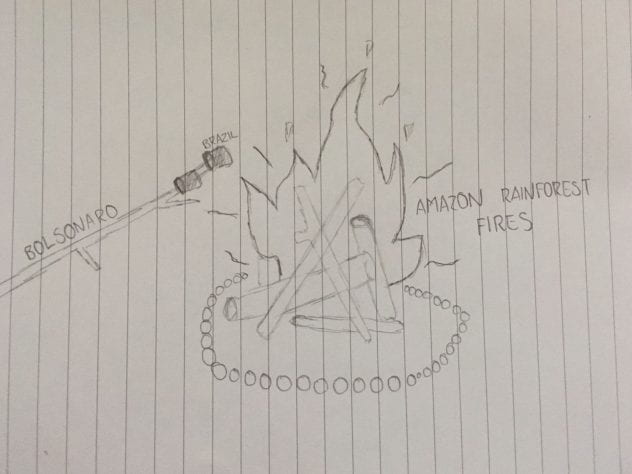UNIT 1: Identity and Representation- https://padlet.com/aggar14507/gyew1e63qnpth6ee
UNIT 2: Creativity and Transformation- https://padlet.com/aggar14507/l3kb3zy04b67bg1h
Paper 1 Practice and Feedback: https://padlet.com/aggar14507/30q79ksii5zfcidw
The poem, “What It Looks Like To Us And The Words We Use” by Ada Limon, depicts a conversation with two friends who are reflecting on the complexities of nature and disagreeing on the unexplained forces which caused it. The author is intending to show how small we can feel in relation to things and sometimes, we cannot always explain the forces which exist and change the world around us through the use of syntax and symbolism to represent the theme of faith and the tensions that exist within understanding spirituality.
The author uses syntax and description to foreshadow the events of the poem and to represent the theme of faith and relationships. The author uses syntax to represent the theme of faith, seen in the line “You say they look like arks after the sea’s dried up, I say they look like pirate ships”. The use of the word “arks” represents and foreshadows the faith that the friend has as the “ark” is often connotated with “Noah’s Ark”, a religious reference. The use of syntax in this context is the author’s way of revealing the faith that the narrator’s friend has and also representing the idea that people often look to God to explain the mysteries of the universe and can sometimes end up seeing things that might not necessarily have been there. The “pirate ships” is also how the author hints at the narrator’s lack of religious spirituality as pirates were often seen to be very anarchist in their views of society, believing that each individual should only believe in themselves not necessarily a divine force, a very individualistic view, and were known for defying the church. The author’s use of syntax in this context when describing the “bluegrass” shows the differences between the two friends very drastically while presenting them on parallel levels, showing that despite the differences in beliefs, the narrator and their friend are still close and can come to some agreement that even if the force they are describing that is the answer to the mysteries of the universe is not religion, there is still something present even if they cannot come to a consensus on what it is.
The author’s use of syntax also shows the relationship between the characters and represents the theme that two completely different things can exist at the same time and although one may be correct, the other doesn’t necessarily have to be wrong. This can be seen at the beginning of the poem where the narrator addresses themselves as “I” and their friend as “you”, both terms which are very isolating to their relationship and identify them as separate instead of together. This use of syntax by the author shows how at the beginning, there was a certain barrier that existed between them as they acknowledged each other’s perspective but believed that the other was wrong. When they are looking at the clouds, however, the author shows how they come together through the use of syntax as the author begins to use “us” and “we” when describing the characters, showing the coming together of the characters to represent the idea that different ideas can come together and coexist in the same space and time despite them being completely opposite.
The author’s use of structure helps show the nature of the relationship between the narrator and their friend as well as reveal the author’s thoughts on the theme of the poem. In the poem, the thoughts of the narrator and their friend are not separated and, instead, blend in together. This creates a contrast between the stark opinion differences and the lack of separation in structure. This is the author’s way of presenting the closeness of the relationship between the characters and represents something further about the theme. Through this lack of distinction, the author uses the friend and the narrator to represent the “marvellous” and the “disorderly” and the idea that they coexist in the same time and the same space.
The poem, “What It Looks Like To Us And The Words We Use” by Ada Limon shows how a difference in opinions doesn’t mean that one person is completely wrong and although we cannot often agree on what the cause is of the mysteries of the universe, it doesn’t mean that there is one acceptable answer. Through the use of syntax and structure, the author wants to show the importance of acknowledging that sometimes, we don’t need to put a name on something to understand it and simply knowing and appreciating that it exists is better than fighting over what to call it.
